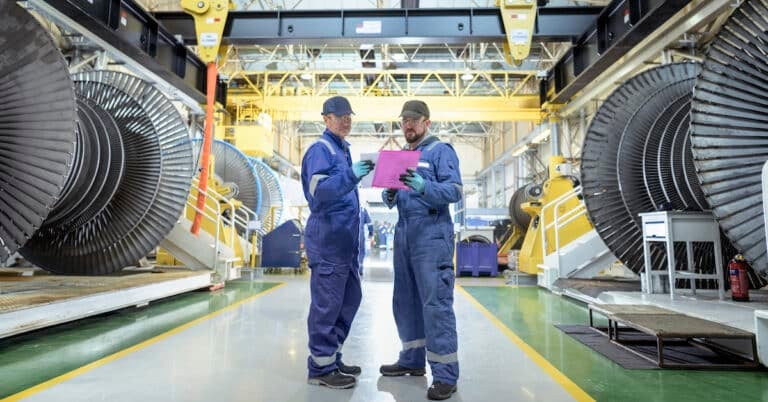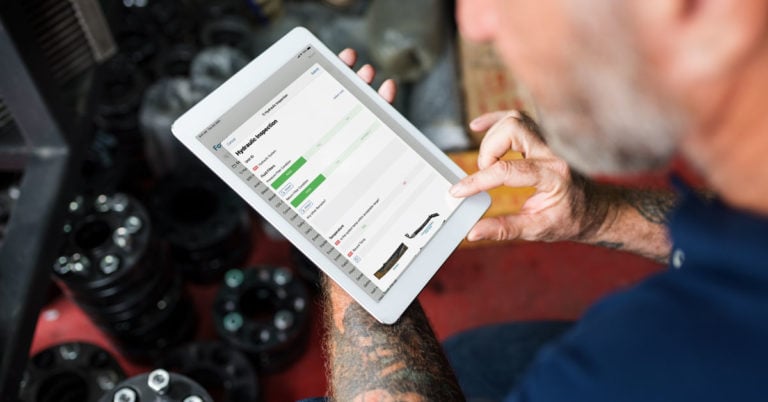If you’re responsible for the maintenance and lubrication of equipment in your business, then you know how important it is to have a well-run lube room. Proper organization and adherence to best practices can help keep your machinery running smoothly and reduce unscheduled downtime. But, it’s not as simple as organizing your parts store room. A lube room requires planning to keep your lubricants clean, dry, and free of contamination. In this post, we’ll discuss some of the key lube room best practices helping you optimize your lubrication management.
The Importance of Lube Room Best Practices
A lube room is a space where lubricants are stored and dispensed. Lubricants are essential for many industrial applications, and their storage plays a vital role in ensuring that these applications run smoothly. There are many best practices that you should follow, such as keeping the area clean and organized, using the proper lubricants for each application, and properly labeling all containers. Unfortunately, many organizations overlook lube room best practices. However, if lubricants are not stored or dispensed properly, they can actually cause more damage than good. This can lead to costly contamination-related equipment failures. So, following these best practices helps to ensure that lubrication processes run smoothly, and you avoid contamination-related breakdowns. In addition, lube room best practices can also help to improve worker safety by reducing the risk of slips, trips, and falls.
Lube Room Essentials
In order to avoid contamination-related failures, it is important to ensure that both lubricants and dispensing equipment are kept clean and free of debris. This will help to extend the life of your equipment and keep your facility running smoothly. Other lube room essentials include:
- Training for all lubrication personnel on the best practices and policies for lubricant handling.
- Storage of lubricants in clean and clearly labeled containers.
- Labeling system that ensures every container or dispensing device is used for only one type of lubricant to prevent cross-contamination of incompatible lubricants.
- Regular calibration of dispensing equipment.
- Consider restricting access to authorized personnel only to prevent untrained employees from accidentally causing a problem.
- Schedule inspections and maintenance of any lube room storage or dispensing equipment.
- Thorough cleaning and inspection of dispensing equipment immediately before use, including oil cans, grease guns, dispensing pumps, and tools.
- Installation of proper breathers and filtration, even for new lubricants.
Stocking Your Lube Room
Lube rooms are necessary for a variety of industries, which means that no two are exactly alike. You can stock your space with the storage, tools, and equipment specific to your lubrication management needs. A well-appointed lube room will typically have:
- If necessary, bulk tanks for delivery and storage of large amounts of lubricants.
- Drum storage racks that may hold several drums
- Drum taps and faucets
- Lubricant transfer pumps
- Grease guns and oil cans
- Various supplies and tools including grease fittings, reservoir screens, and spare filters.
- Wiping rags and absorbent materials for spills
- Portable equipment including filter carts, lubrication carts, and sump drainers.
- Oil reclaimers or purification systems
Tips for Creating Your Best Lube Room
When it comes to lube rooms, there are a few things to keep in mind in order to create the best possible space. Creating yours may feel like a challenge, but with a little planning, it can be an efficient and effective space.
Consider the Space You’re Using
Before you consider the layout of the room, ask these two questions: 1) Is it easy to maintain a constant temperature in the room? 2) Is the room exposed to harmful particles and dirt that will find their way into your lubricants? If necessary, make changes to your current room or look for another space with better environmental conditions. Furthermore, it will be far more convenient if your lube room is close to where your supplier delivers new lubricants.
Plan the Layout for Your Usage
How will your technicians use lubricants? Do they need to mix lubes? You should make sure there is plenty of room, ventilation, and lighting for all of their lubricant handling or mixing tasks. Proper ventilation is especially important to avoid fumes, and good lighting will help lube technicians see what they’re doing. Additionally, if you have high lubricant needs, you will need a large lube room with plenty of storage space.
Don’t Forget About Safety
You should stock your lube room with all the necessary safety equipment including gloves, goggles, aprons, and any first aid or spill treatment supplies. A nonslip floor may even be worth considering, avoiding spills or accidents.
Prevent Accidental Lubrication Errors
Clear labeling of all lubricants and supplies is critical to avoid lubrication errors. Labels should include the base material, viscosity, and any additives. But, it doesn’t stop there. You must train employees on your lubricant handling policies. Many organizations even go as far as restricting lube room access to only trained employees. Considering that cross-contamination of lubricants can cause a reaction that increases wear and equipment breakdown, adding a key card access system to your lube room is a worthy preventive measure.
Implement Proper Filtration and Breathers
One important aspect of lube room management is ensuring that you properly filter new oil before use. This can be done by either choosing built-in filtration for your storage units, or by using a filter cart for oil in drums. In addition, you should install dessicant breathers on your lubricant storage units.
Digitize Lubricant Inventory and Tasks
Lubrication Management Software digitizes your lubrication strategy and helps you accurately manage and monitor the lubricant inventory in your lube room. With real-time data, you can always see what you have and what you need to order before you run out. The software even enables you to create photos, documents, work instructions, assign oil and grease products, and plan estimated completion times for every lubrication point in your facility. All of this is then made available to your technicians on any mobile device, allowing them to follow all best practices no matter where they are in the facility.

An Essential Component of Lubrication Management
The lube room is an essential component of lubrication management and, as such, deserves your attention to detail when setting it up. By stocking your lube room with the essentials and following some best practices, you can ensure that your lube room is both efficient and effective. From creating a lube room to charting your lubrication routes, you don’t have to do this alone. Our team is here to support you on your journey to achieving your lubrication management goals.


